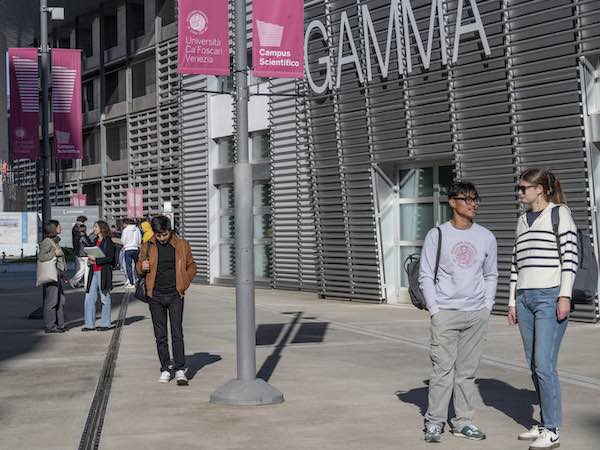Vallà is hamlet in the town of Riese Pio X (Treviso) that gained fame for a participatory urban regeneration project led by the Bocaverta collective and called The Wallà (the name is a play on the placename and the word “wall”). Various Italian and international street artists transformed the walls of an otherwise unremarkable neighbourhood into open-air canvases, creating a vibrant new look.
In June 2024, a memorandum of understanding was signed between the Municipality of Riese Pio X, the Bocaverta APS Collective, and the Department of Environmental Sciences, Informatics, and Statistics at Ca' Foscari University, represented by Professor Francesca Caterina Izzo. This agreement aims to study the conservation of outdoor mural artworks.
In October, a group of students from the Conservation Science for Modern and Contemporary Art course conducted their first hands-on experience in the streets of Vallà.
Arianna Abbafati and Giovanni Milan, who are enrolled in the Master's degree program in Conservation Science and Technology for Cultural Heritage, shared their insights about a two-day experience filled with analysis, community engagement, sunshine, and rain.
First of all, do you enjoy street art? Are there any artists you follow in particular?
Arianna: "Yes, I really like the street artist Cibo, who paints over messages of hate with something positive. I also appreciate how he sometimes defaces his own work, transforming it and always conveying a positive, 'gastronomic' message."
Giovanni: "I don't have a favourite street artist, but I have appreciated the impact of street art on cities since childhood. When I would visit my grandparents in Turin, I was captivated by the colourful murals that brought life to the grey surroundings."
What were your first impressions of Vallà when you arrived there?
Arianna: "Since I am not originally from Venice, I likely would never have heard about Vallà if it weren't for this project. I really enjoyed listening to the community speak about it with such pride. The whole project aimed to highlight a peripheral and often overlooked area. I was pleasantly surprised by the warm welcome we received; everyone was happy about our arrival."
Giovanni: “I viewed it as almost a pleasure trip. We arrived on a beautiful sunny day and were welcomed by the mayor, surrounded by many curious townspeople. It was refreshing to escape the workshop. Overall, it was a successful blend of social interaction and practical training.”
"The first day was sunny, while the second day brought rain and wind. The Ca’ Foscari group was diverse, including students, soon-to-be graduates, the lab director, a professor, and a PhD student. This mixture provided an opportunity for us to get to know each other better and helped forge strong bonds among us. On a personal level, it also contributed to our group's cohesion, and we continue to see and keep in touch with one another."
Which mural in Vallà did you particularly like?
Arianna: "On the second day, during the mural tour, we met a young man who lives in a 'painted' house. He took us to where he works, which was also decorated with a mural (created by Joys and Orion) that I instantly loved. It featured a pattern for a pair of trousers that I would wear straight away."
Giovanni: "I can't choose one favourite; I liked many of them. The Little Pixel, which we explored, is very colourful and impactful. It was a collective work created last summer with the community and features works by street artist Federico Pietrobon. I am passionate about classical art, so I particularly enjoyed Kraser's mural of the Three Graces. To be honest, I was a bit envious of those walls. I live in a small town, and I would love to see my village explode with colour. Another mural that I appreciated was the black-and-white optical piece by the art duo Stenlex. I was impressed by the context in which it was created; in my opinion, it fit in perfectly."
What do you think will remain with you after this experience?
Arianna: "It was definitely a new experience working outside the workshop. We brought our tools with us and set up the workshop on-site, coordinating our efforts and enjoying moments of camaraderie. We interacted with the local community, who often stopped by to ask questions, and we even allowed them to try out the tools. We worked hard and, by the evening, we were tired but satisfied. This experience provided an opportunity for personal and professional growth. I really enjoyed participating in the meeting organised by the Bocaverta collective and the municipal administration. We all sat in a big circle and discussed future projects for Vallà, including the creation of murals and how local companies could contribute materials. We were approached as 'conservation scientists,' and there was a strong thread that connected us all. It was a very constructive moment."
Giovanni: “I agree with Arianna; it was a moment of interest for everyone, almost like a 'taking stock.' I really enjoyed being a part of it. The funny thing is that while the local community was initially a bit reluctant about the project, now everyone is eager to propose their walls for the next artistic intervention.”















